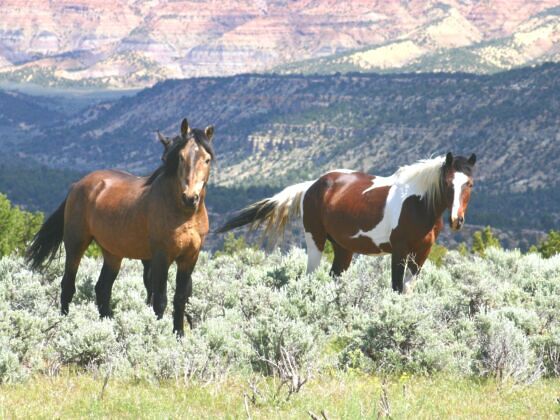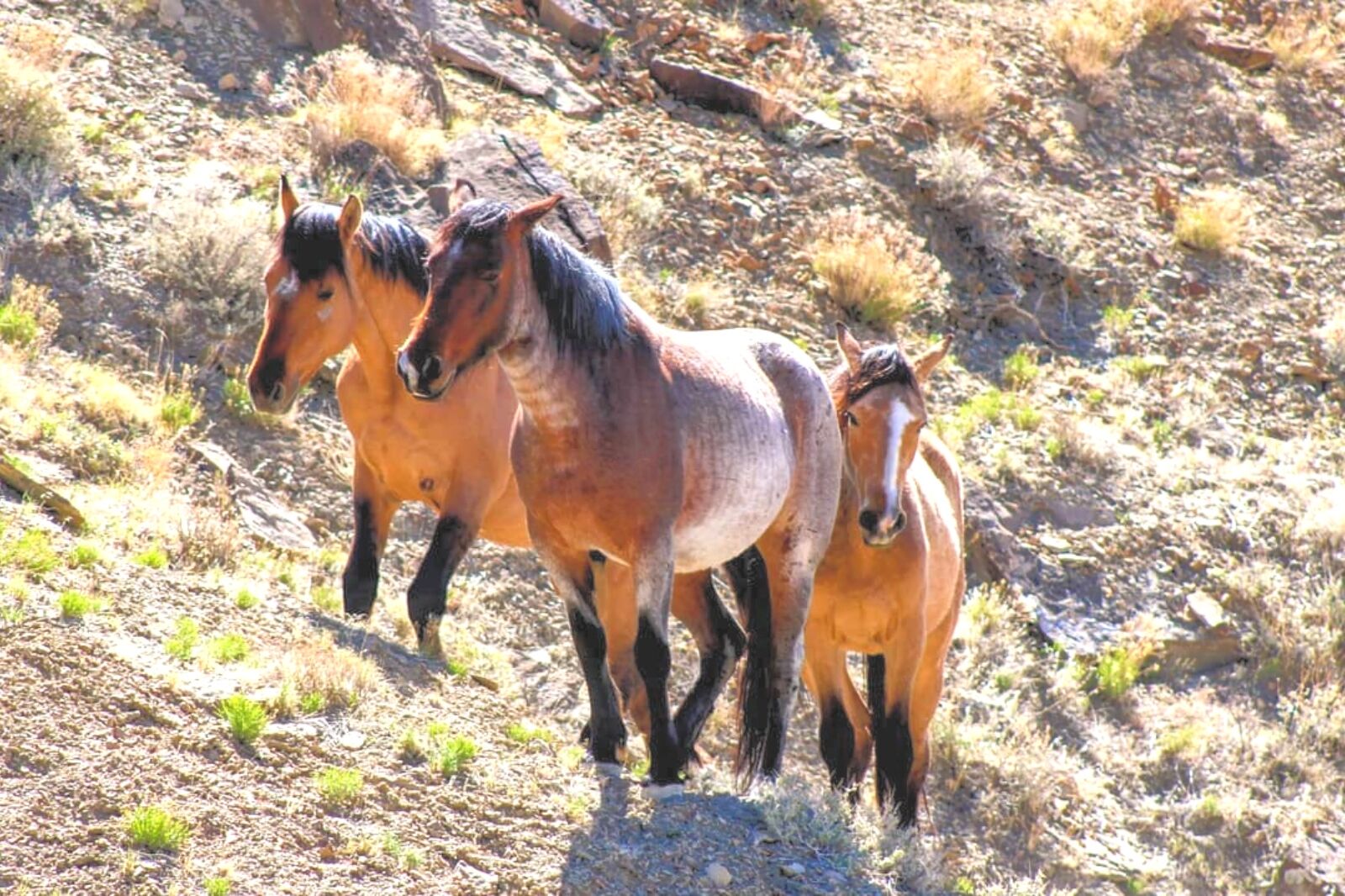Centuries ago was the height of the Wild West era in Colorado, where the indigenous Ute tribe and gold-hungry settlers roamed the land. Although the state has lost some of its wildness over the years, one remnant of that time is the wild horses of Colorado, whose ancestors were used by settlers and Ute alike. Now, these free-spirited creatures live in Colorado’s four Herd Management Areas (HMAs) where, if you’re lucky, you might be able to see them in action. Here’s where to find wild horses in Colorado.

Everything You Need to Know About Seeing Wild Horses in Colorado
How many wild horses are in Colorado?

Photo: Visit Grand Junction
The Bureau of Land Management (BLM), which runs the state’s HMAs, currently estimates that there are 1,800 wild horses living in Colorado. Since the state’s designated wild horse land is only suitable for close to half that number, the BLM often pursues controversial “roundups,” in which horses are gathered, trapped, and then sold in order to keep population numbers sustainable.
Roundups are done to cut down on the negative effects of wild horse overpopulation. If there are too many horses on the state’s HMAs, some may wander off in search of food on private land and end up grazing on grass meant for animals on farms and ranches. Wild horses may also prevent other species (like sheep, pronghorn, and elk) from getting water, driving the other animals that share their land away.
The good news about Colorado’s healthy wild horse population is that you have a good chance of finding and observing them from a distance…if you know where to look.
What kinds of wild horses are in Colorado?

Photo: Visit Grand Junction
Colorado is home to a diverse array of wild horse breeds, with everything from newly-introduced curly horses to paints, roans, and appaloosas. Most of the wild horses you’ll find in the state have Spanish, Arabic, or North American origins. Many of Colorado’s wild horses are mustangs, which are technically classified as “feral” rather than “wild” horses because they originated with domesticated breeds. These mustangs have become mixes of different breeds throughout the generations and appear in a variety of colorings, such as palomino, blue and red roan, or sorrel.
Best places to see wild horses in Colorado
Sand Wash Basin, Northwest Colorado

Photo: Visit Moffat County
Sand Wash Basin is an open HMA in northwest Colorado off County Road 67, west of Craig. This BLM land covers 157,730 acres, and is home to a mixture of wild horse breeds, although most bear the greatest genetic resemblance to the Iberian Spanish horses of the 16th and 17th centuries.
While you can find wild horses of all colors here, you’re most likely to come across gray and sorrel ones. Locals claim that the best way of pursuing a sighting is to simply drive the county road through the BLM land, or take advantage of the area’s many hiking paths. Keep in mind that a high-clearance, four-wheel-drive vehicle will make for the most comfortable excursion. To increase your chances of a sighting, take a private tour with Wild Horse Warriors, and when you’re done looking for wild horses, stay in the popular hunting town of Craig in Colorado’s arid plains.
While iconic wild horse Picasso is no longer grazing in Sand Wash Basin, if you’re lucky, you may come across Mystic, a wild white mare with haunting dark eyes, or stallion brothers Caliente and Augustus.
Spring Creek Basin
Located in between Norwood and Cortez in southwestern Colorado lies Spring Creek Basin. The herd here is one of the smallest in the state at under 100 horses, but at Spring Creek Basin you’re also likely to glimpse elk or antelope, making this HMA a top wildlife destination. Plan a fun day with a four-wheel-drive vehicle and take road CR19Q (four miles down highway 141 from Naturita) to K20E in Disappointment Valley.
Local legend suggests that the wild horses of Spring Creek Basin were brought to the area by a conman from Montana who had stolen them and hoped to make a profit. Instead, the man was forced to flee to avoid criminal charges and left the horses behind. Keep an eye out for spirited Sundance (recognizable by his long white mane and many battle scars) and his band of mustangs on the rugged terrain.
Little Book Cliffs Wild Horse HMA

Photo: Visit Grand Junction
After exploring Colorado’s fruit and wine country in nearby Grand Junction and Palisade, head to the sagebrush-dotted canyon that makes up the Little Book Cliffs HMA. Your best bet for seeing horses here is to go by four-wheel-drive vehicle to Indian Park, where you’ll glimpse a diverse array of breeds.
You may need to get the binoculars out to find wild horses here or tramp through the fields to look for flat, open stretches where the herds gather. Just be prepared for the heat and keep your distance and stick to slow movements and gentle voices to ensure safety. Probably the most fun way to explore this HMA is taking a tour by horseback (not wild horse, of course) with Rimrock Adventures through Little Book Cliffs to spot one of the 150 horses that make their home here.
Piceance-East Douglas HMA
The Piceance-East Douglas HMA is located in the northwest of the state and is home to 100-250 wild horses on a little over 190,000 acres of public land. Hiking and 4×4 trails offer the best chances of finding bands of horses here, and a tour from Piceance Mustangs is coming soon.
For the highest chance of coming across a herd, head to Yellow Creek or 84 Mesa in springtime. During the summer, the wild horses leave the lowlands for higher elevation, and in the winter bands head toward slopes and ridges, so plan your visit accordingly. For great views that may just include bands of wild horses, drive Rio Blanco County Road 103 to the Cathedral Bluffs.
This HMA was the site of a particularly controversial roundup in the summer of 2022 and is also known for being an oil, coal, and gas-rich section of BLM land. While Piceance-East Douglas is open to the public year-round, be aware that there are no facilities on the property, and phone service may be spotty–perfect for an off-the-beaten-path adventure. The towns of Meeker and Rangely are the closest places to find food and gas.